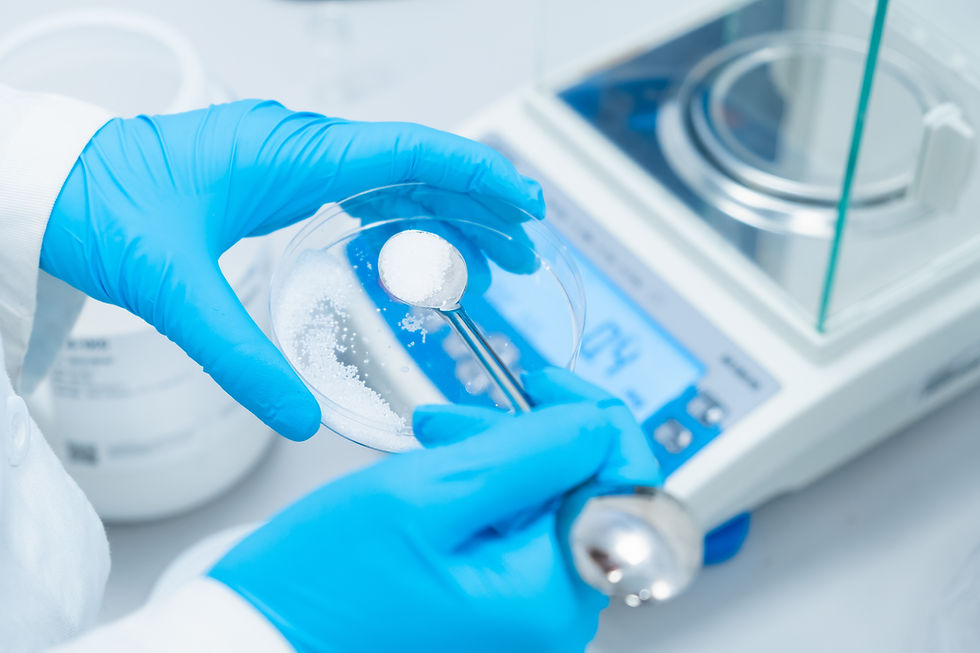Why cGMP Matters in Cosmetics
- 6 days ago
- 3 min read
In recent years, the cosmetics industry has been under growing scrutiny from regulators, consumers, and even investors. While cosmetics are not medicines, they are products that go directly onto the skin, hair or eyes, and the consequences of poor quality can be serious.
Contaminated creams, unlabelled allergens, or unstable formulations are not only reputational risks for a brand, but they can also pose genuine safety concerns for customers. This is where current Good Manufacturing Practice, or cGMP, comes in.
Many people still assume cGMP is something reserved for the pharmaceutical sector, but in reality it plays a vital role in cosmetics manufacturing. The principles of cGMP provide a framework for consistency, cleanliness and control, which are just as relevant to a moisturiser or mascara as they are to a sterile injectable drug.

Regulatory Expectations are Tightening
In the United States, the FDA has traditionally applied less oversight to cosmetics than to medicines. However, with the introduction of the Modernization of the Cosmetics Regulation Act (MoCRA), companies are now facing clearer obligations around safety substantiation, adverse event reporting and facility registration.
The EU has long required compliance with ISO 22716, the international guideline that translates GMP into practical requirements for cosmetics.
Other regions, from the Middle East to South America, are steadily moving in the same direction.
The message is clear: regulators expect cosmetic products to be manufactured in a controlled, documented and auditable way. Facilities that fail to meet these expectations face recalls, import alerts, or the instability to sell in key markets.
Protecting Consumers and Brands
The most obvious reason for adopting cGMP in cosmetics facilities is consumer safety. Unlike many industrial products, cosmetics are applied to the body, often daily and over long periods of time. This makes any contamination or formulation error particularly impactful.
Bacterial contamination in a face cream, for example, can trigger infections in vulnerable users. Heavy metal contamination in eye products can cause irritation or worse.
For a brand, the reputational damage from such an incident can far outweigh the cost of implementing proper controls. In today's world, a single safety issue can spread across social media in hours, undermining years of brand-building.
What cGMP Looks Like in Practice
In a cosmetics facility, cGMP may not always mean the same level of stringency as pharmaceutical manufacturing, but the core principles are familiar:
Clean and Controlled Environments: Production areas should be designed to prevent cross-contamination and maintain hygiene standards appropriate for the product.
Personnel Training: Operators must understand hygiene, gowning and proper handling of raw materials. Even small lapses can introduce risks.
Documented Processes: Standard operating procedures, batch records, and deviation logs ensure that products are manufactured consistently and traceably.
Equipment Maintenance and Calibration: A mis-calibrated mixer or filling machine can ruin entire batches.
Raw Material Control: Suppliers should be qualified, incoming materials tested, and storage conditions monitored.
Quality Testing: In-process checks and finished product testing confirm that products meet their specifications before release.
Together, these practices reduce variability, improve reliability, and create an auditable trail that stands up to inspection.
A Foundation for Growth
For many cosmetics companies, especially start-ups or mid-sized brands, the idea of implementing cGMP can feel daunting. But in reality, it is an investment that pays off in multiple ways.
Retailers, investors and international partners increasingly expect to see evidence of strong quality systems. Certification to ISO 22716 or clear cGMP alignment can open doors to new markets and strengthen a company's credibility.
It also helps to future-proof the business. Regulations are tightening globally, and what may be optional today could be mandatory tomorrow. Companies that wait until enforcement arrives often find themselves scrambling at high cost, while those with cGMP foundations in place adapt smoothly.
Building a Culture of Quality
Perhaps the most important benefit of cGMP is cultural. It shifts the mindset of a facility from reactive to proactive, from "fixing problems when they happen" to "designing systems that prevent problems in the first place".
This culture of quality not only improves compliance but also boosts efficiency and staff engagement. Operators who understand why they follow certain procedures are more likely to take ownership of their role in ensuring safe, effective products.
Conclusion
Cosmetics may not be life-saving drugs, but they deserve the same commitment to quality. cGMP provides the tools and structure to deliver safe, consistent products while protecting both consumers and brands.
Companies that embed cGMP into their operations will be better positioned to thrive in a competitive and highly visible marketplace.
📌 Need help designing or remediating your contamination control program?
Pharmalliance Consulting Ltd offers hands-on support, training, and gap assessments to ensure your cosmetics operations are regulatory-ready and quality-driven. Get in touch with our team of contamination control experts to start your compliance journey today.




Comments